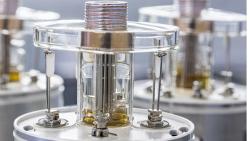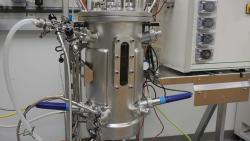
OR WAIT null SECS
- About Us
- Advertise
- Editorial Information
- Contact Us
- Do Not Sell My Personal Information
- Privacy Policy
- Terms and Conditions
© 2024 MJH Life Sciences™ and BioPharm International. All rights reserved.
A 25-Year Retrospective on Bioprocessing mAbs
Michiel E. Ultee of Laureate Biopharmaceutical Services gives an update on 1988 article regarding virus testing and how the advance of monoclonal antibodies has changed processes.
Twenty-five years ago in Biopharm International E. Joner and G.D. Christiansen published an overview of the requirements and rationale for biosafety testing of hybridomas and the resultant monoclonal antibodies (mAbs) made from them. Although the authors alluded to regulatory guidance documents for hybridoma and recombinant cell lines, their focus was on hybridomas, which at that time were the dominant technology for the production of antibodies. Since 1988, the balance has shifted dramatically in favor of production using recombinant technology in such well-known cell lines as the Chinese Hamster Ovary (CHO) cells. Requirements for biosafety testing are similar, however, and the need for stringent safety testing, including viral-clearance validation, has not changed.
The industry has seen remarkable changes in the production of antibodies since 1988, beginning with the exponential increase of titers from cell culture. Both basal and feed media have improved markedly, allowing cells to grow well in suspension and reach high cell densities. These advances in cell-culture technology have also allowed the biopharmaceutical industry to stop using serum in cultures, thereby reducing risk from this animal-derived, heterogeneous component. Greater understanding of molecular genetics has led to new techniques to dramatically enhance expression of recombinant proteins within each production cell, by coupling to highly transcribed genes or enhancing the transcription of genes by other means.
Cell-culture titers are the product of the cell density times the productivity of each cell. Thanks to this multiplicative effect, titers have grown 100-500 fold in 25 years. Today, antibody titers are no longer expressed in mg/L, but g/L, with 2–5 g/L being the benchmark for good expression. Such high titers have further widened the applicability of antibodies by lowering their cost of production.
DOWNSTREAM ADVANCES
Major changes have taken place on the downstream side of mAb processing as well. Early processes relied on slow chromatographic supports often run in the cold room, with operators dressed accordingly. Newer resins with faster flow properties, more robust polymers, and higher loading capacities have freed antibody processors from the cold room. More recent innovations using membrane supports for flow-through steps allow even faster processing times. The launch of nanometer-pore filtration in the early 1990s introduced a robust viral-clearance step, which added greatly to the safety of antibody and other protein pharmaceuticals.
HUMANIZING ANTIBODIES
The progressive humanization of antibodies is another success story that has enabled these versatile and exquisitely selective proteins to progress into large-scale therapeutics. Early antibodies were typically produced from murine hybridomas generated by fusion of myeloma cells with antibody-producing lymphocytes from immunized mice. The resulting murine antibodies were seen as foreign by human patients, resulting in a human–anti-mouse antibody (HAMA) response in most cases. This unfortunate but understandable side effect greatly restricted their applications as biopharmaceuticals.
View "Hybridoma Technology Products: Required Virus Testing," by Eva Joner and Gary D. Christiansen at BioPharmInternational.com/Retrospectives.
Molecular biologists addressed this restriction by developing techniques to create chimeric structures, in which three-fourths of the murine IgG antibody structure, the constant regions, were replaced with the corresponding human construct. Further advances led to additional humanization of antibodies, first through selective amino-acid substitution and later through the construction of fully human antibodies. These changes greatly minimized the patient immune responses to injected antibodies, enabling their widespread and repeat use.
Today, mAbs are the leading category of biopharmaceutical. Their domination is likely to continue, based on the rich pipeline of antibodies in development. The early promise of mAbs as therapeutics, the "magic bullet" coined by Paul Erlich more than 100 years ago, took the great advances in biology, genetics, biochemistry, and materials science of the past 25 years to be realized. As bioprocessors, we can be proud of the role we have played in bringing these powerful new medicines to patients.



